La ancient city of basques, located at the western end of the province of Toledo, it is one of the most curious visits that we can make in a tourism trip through Castilla-La Mancha.
These are abandoned remains of an Andalusian city that flourished around the Tajo between the 9th and 12th centuries.
Here we are in the foothills of the Toledo Mountains, in an area where large granite formations emerge that create an abrupt landscape through which the river flows. Huso River, which is a tributary of the Tajo, as well as the La Mora stream.
One of the arms of the river now reaches the foot of the site. Azután Reservoir.
All the information in detail
Where is the ancient City of Basques
At the top of a rocky protuberance, dominating the point where the Huso rivers y La Mora, a towering tower rises fortress who dominated a walled medina and, of course, also the surroundings.
The first view of this complex is very surprising and attractive, since it is very likely that before the visit we do not have a very clear idea of what we are going to find.
How to visit the Basque archaeological site in Toledo
Although the city has been well studied for some time in different archaeological campaigns, the place is relatively little known and, therefore, little visited.
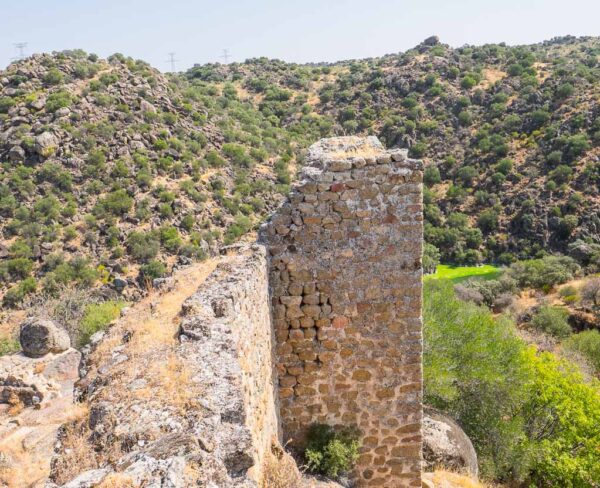
One of the reasons is that it is located on private property and, therefore, The visit is limited to a fairly restricted schedule.
Access is not easy either, although any normal car can reach the same premises, going slowly and carefully.
But the fact that it is rarely visited and is located in a forested and rugged area, in the middle of a little-altered landscape, gives the complex a special charm.
A curiosity that always arises about this city is the origin of its name.
There are references to this toponym, either as Basques o Basques, in different chronicles for many centuries.
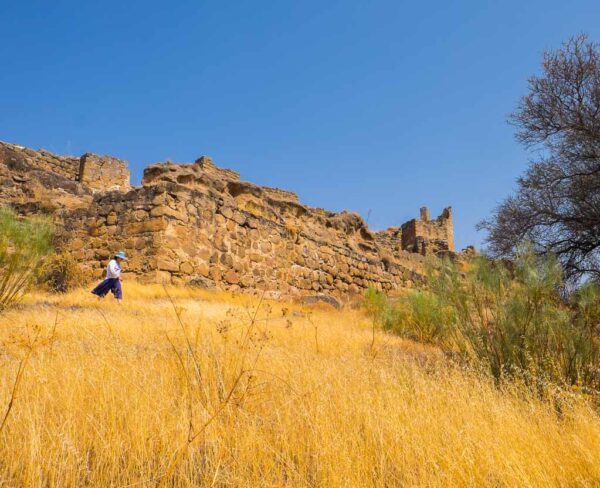
The first hypothesis that arises is that the place had been repopulated by people of Basque origin.
This idea was considered a while ago, but there is nothing to support it.
Most likely, the name of Basques derive from Spike and it actually referred to the area, not the city itself.
When the area was depopulated, the name of the city was forgotten and the name of the territory remained, which with some variation is what we now give to the archaeological site.
Curiosities ancient history City of Basques
If the Muslim chronicles do not make clear the original name of the city, they do not give information about its foundation either.

Although there is no absolute certainty, it is possible that it was founded in the middle of the century during the reign of Abdullah III with the aim of controlling the fords on the Tagus.
Controlling the places where the rivers could be crossed was something fundamental at that time, and to do so they would expand a previous fortress that would have been in the place where the town is now. Basque citadel.
The place was also convenient to control the different mines that were exploited in the Toledo Mountains.
But after the fragmentation of the caliphate in the kingdoms of taifa and the delivery of Toledo to Alfonso VI In 1085, Christians dominated this territory, at least for a time, as this region became a border area, unstable and unpopulated for a time.
ORGANIZE your TRIP
- Don't forget your TRAVEL INSURANCE with a 5% discount
- Book the HOTEL for your trip
- RENT a CAR for your trip
- The best TOURS and EXCURSIONS in Spanish
- NO-LINE TICKETS for museums and monuments
- Best FREE TOURS around the world
- Book your TRANSFER from the airport
- eSIM card with INTERNET at the best price
But for a few decades a relatively important population flourished here, since the medina area covers an area of eight hectares.
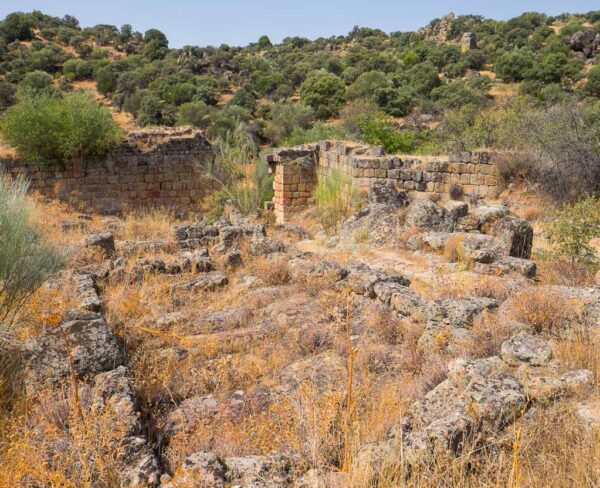
In addition to its importance for the control of the territory, whether the river or the mines, the place would be a good place to live because the weather conditions would probably be better than the current ones and there would be more abundance of water.
In fact, they tell us that in the years when it rains more, the area is transformed and regains the splendor it must have had in times when there was more rainfall.
It is a territory in which holm oaks and wild olive trees abound, but also almond trees, juniper trees and mastic trees.
What to see at the archaeological site of Ciudad de Vascos
The arrival at the City of Basques It is spectacular since the first thing we see is a part of the wall that completely surrounded the medina. This style of urban planning was very common at the time.
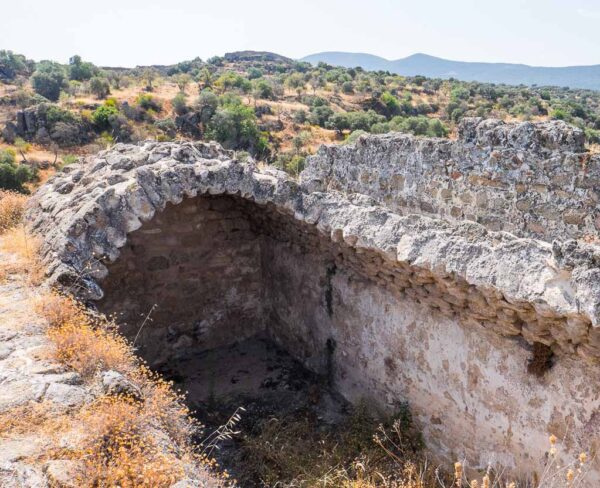
Within the enclosure everyone can wander at their own pace along the different paths that cross it and there is no marked itinerary.
La Wall It can be followed almost completely in its entire length around the medina, and it stands out how well built it is, especially in some areas.
Apart from main doors, like the south (which is the way to access the complex) and the west, there are several hatches through which you can enter and exit.
El inner city It is a fairly large area, with parts on a slope, so in different places we can see sections of steps to overcome the unevenness.
Much of the medina It is covered with vegetation, whether grass, bushes or trees.
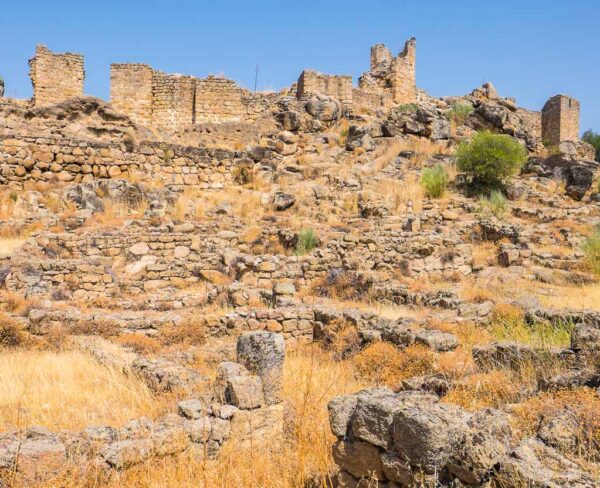
Some areas are excavated and it is easy to see the layout of the streets and houses.
If we look carefully, we can discover a small mosque y an oven.
Kasbah of the City of Basques
The most spectacular thing is, without a doubt, the citadel area, at whose feet we find a structure very well defined by the walls.
These are the remains of the main mosque of the city, and a series of pillars allows us to imagine the different naves into which the building was divided.
La climb to the citadel It takes us to the area from where the city and the territory were controlled. The city's governor and a military contingent would live here.
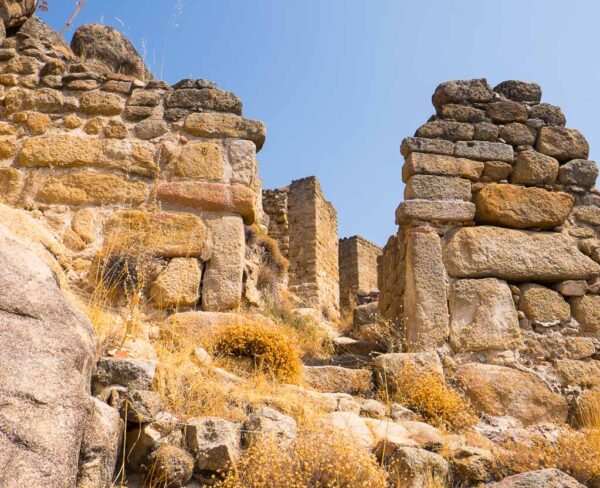
As we walk through this part we see the different military and residential stays, And a cistern.
The view is spectacular because, apart from a power line, there is little else to tell us what century we are in.
The hills, the water, the vegetation, everything allows us to dream in some way that we have found a city lost in time.
If we go down and pass by the mosque, we can continue in search of the west door.
Don't forget your Travel Insurance
Are you organizing your trip or getaway? Don't leave without take out your travel insurance before, and here we explain why. If you hire it with us, you have a 5% discount
Upon crossing it we reach the Mora stream, where are the remains of a suburb, which include baths and tanneries.
A wooden walkway allows us to continue until a pier.
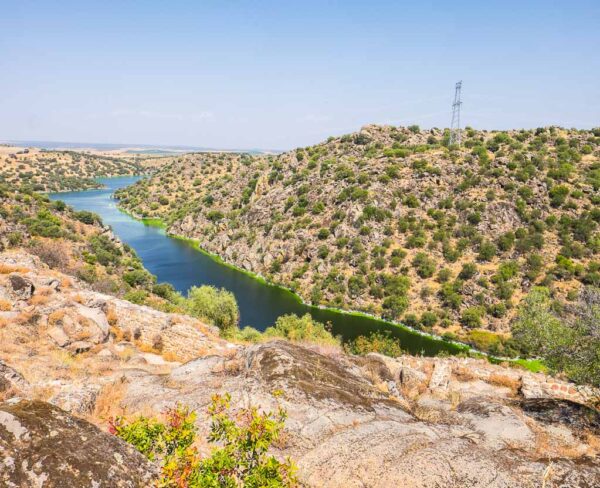
From what we were able to find out, there is a project so that at some point the visit to Vascos will be done by entering through here, after a short navigation through the Azután Reservoir.
Dates and times to visit the City of Basques
As has already been said, Basques is in a private estate.
Being a good of cultural interest, the visit must be allowed by the owners on a series of days a year and, therefore, these conditions must be respected.
The remains of the ancient City of Basques They can only be visited between mid-May and January 31, on Saturdays from 10 a.m. to 14 p.m.
How to get to Ciudad de Vascos in Toledo
El archaeological site of Ciudad de Vascos is southwest of the province of Toledo, 40 kilometers from Talavera de la Reina almost two hours southwest of Madrid.
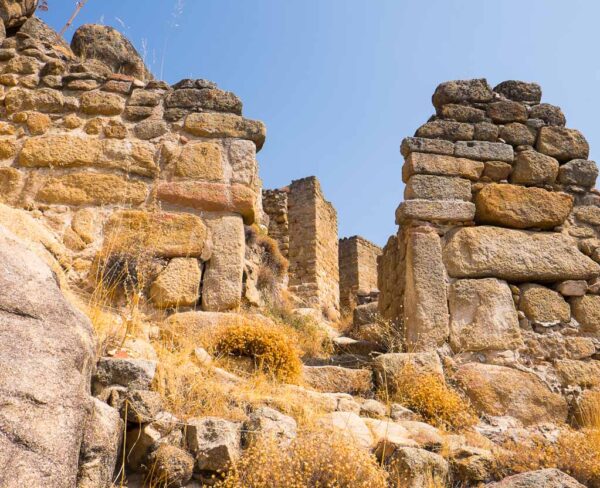
The entrance is through a dirt track that goes out to the east, right at the intersection of the CM-4100 highway, between The Archbishop's Bridge y The star, and TO-1197 towards Navalmoralejo.
The track goes exactly in the opposite direction to the latter.
First you cross the Fuentelapio Estate and then you get to the Finca Las Cucañas, which is where the deposit is located.
Being a private property, you must not leave the path that leads from the entrance to the walled enclosure at any time.
La Visit of Ciudad de Vascos is free and free.
This excursion to Vascos can be combined with other interesting places in the area, such as the Azután Dolmen, Archbishop's Bridge u Oropesa.
Book your hotel, 15% discount, free cancellation
When planning your trip, we advise you to, well in advance, Book your hotel now on booking.com where you can find discounts from 15% and you will have a possible cancellation for free




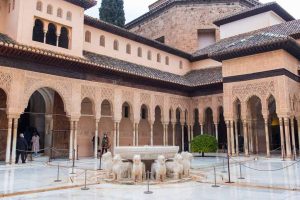












Comment